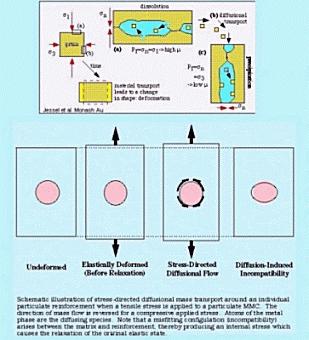DISLOCATION CREEP
Creep or time dependent that eventually leads to weakening of the rock and producing flaws or defects in the atomic lattice of crystal that forms a constituent of the rock.
At low temperature, most rocks deform by cracking and frictional sliding. At high temperature, however, ductile deformation is accomplished by a range of thermally activated processes.
dislocation creep= dislocation glide + diffusion, permitting arbitrary deformation of crystal
The motion of dislocations into lower energy configurations produces tilt walls (composed of edge dislocations) and twist walls (composed of screw dislocations) that bound subgrains of slightly different orientation. As deformation continues, the angular difference between subgrains increases, until eventually the subgrain is so different in orientation from its parent grain that it is considered to be a separate grain.
